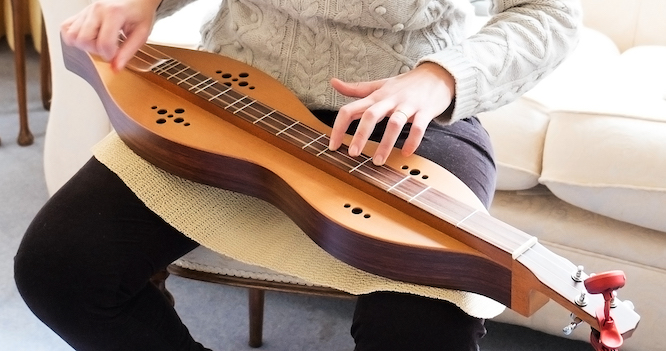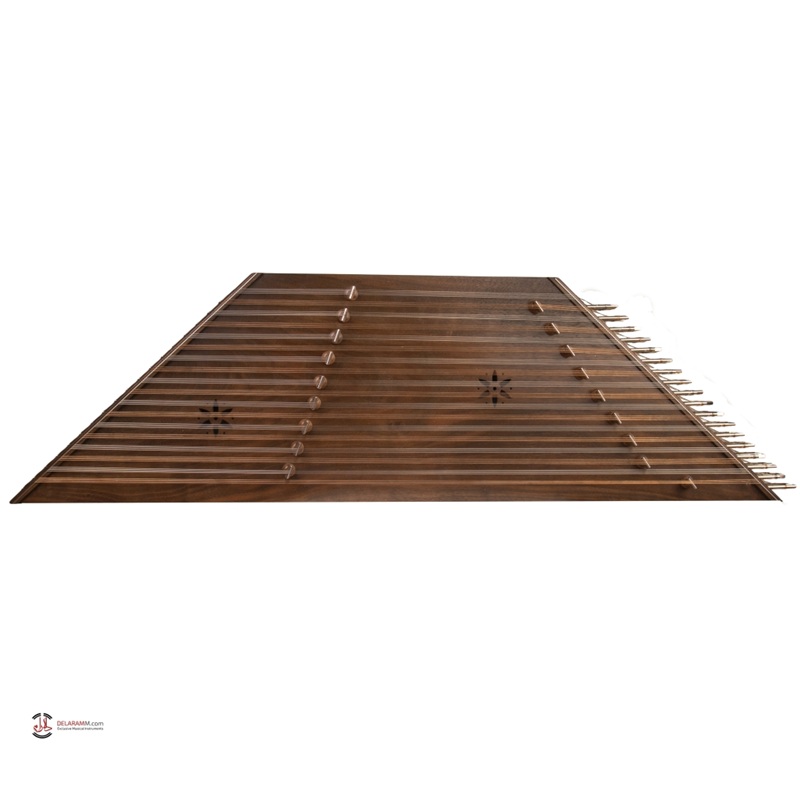Settling the debate: What is the difference between a dulcimer and a santoor
The Middle East is renowned as the cradle of civilization. This region is not only the birthplace of some of the earliest civilizations, such as Mesopotamia, but it is also the origin of several musical instruments, like the lyre and harp, which have significantly influenced modern music. Museums dedicated to musical instruments, especially those showcasing the rich history of Iran, are particularly captivating for visitors. The Iranian santoor (or santur), one of the most celebrated musical instruments in the country, always amazes audiences with its delicate and distinct sound. Its shape, intriguingly similar to that of a dulcimer, often prompts curiosity. What is the difference between a dulcimer and a santoor? The main difference between these two instruments lies in their construction, design, and musical range. We will explore this topic in depth in this article.
Dulcimer vs. santoor: tracing the origins
The santoor and dulcimer are both stringed musical instruments with a trapezoidal shape. While the dulcimer’s overall shape can resemble an hourglass or teardrop, the santoor has a more defined trapezoidal form. Despite their similarities, these instruments differ in several significant aspects.
The dulcimer has two primary styles: the hammered and mountain dulcimer. The latter is often played on the lap, is traditionally narrow in shape, and has European origins, particularly evident in Appalachian, American, and 19th-century European folk music. In contrast, the hammered dulcimer, like the santoor, has roots tracing back to the Middle East and Persia.
The santoor originated in Persia, with its earliest depictions found in Babylonian and Assyrian stone carvings in 669 B.C. Some of the references also associate the origin of the santoor with the Kashmir region in India. Over the centuries, the santoor has been traded and traveled to various parts of the world, undergoing modifications in its shape and construction. Originally, the santoor was strung with goat intestines, and its main body was crafted from stone and wood. Many historians consider the Babylonian santoor to be the ancestor of several modern instruments, including qanun, cimbalom, and hammered dulcimer.
The santoor originated in Persia, with its earliest depictions found in Babylonian and Assyrian stone carvings
Dulcimer vs. santoor: construction, design, and playing techniques
What is the difference between a dulcimer and a santoor? In the previous section, we briefly reviewed the origin of each of these instruments. However, their differences extend beyond their origins.
One of the main differences between the santoor and the dulcimer lies in their construction and design. The santoor has a wooden body, typically made from a walnut tree, and features between 72 to 100 strings arranged in three to four sets, stretched over wooden bridges. These bridges divide the strings into different segments, allowing for a variety of pitches. In contrast, the dulcimer is made from hardwoods such as birch, spruce, or maple and has fewer strings than the santoor. The strings on a dulcimer are arranged in pairs or triplets, each tuned to the same pitch. While both instruments use wooden bridges to create different pitches, their arrangements differ.
The santoor is played with lightweight mallets called Mezrab. Players strike the strings with Mezrabs using a technique that combines tapping and sliding to produce a variety of tones and effects. In contrast, the dulcimer is typically played with hammers or mallets, with a technique that emphasizes rhythmic patterns and arpeggios.
Musical range and notation
What is the difference between a dulcimer and a santoor? If you ask people who are experienced with both instruments, they will undoubtedly point to their distinct sounds and musical ranges. The santoor produces a resonant and bright sound with rich harmonic content, primarily due to its multiple strings per note, which create a complex harmonic spectrum. Its wooden trapezoidal body allows for sustained notes and rich decay, making it well-suited to the intricate melodic and rhythmic patterns of Middle Eastern and Indian classical music. In contrast, the dulcimer has a bright, percussive sound with a distinctive ringing quality, characterized by a clear and resonant tone ideal for folk music’s melodic and rhythmic patterns.
Santoor produces a resonant and bright sound with rich harmonic content, primarily due to its multiple strings per note
The sound range of a dulcimer typically covers several octaves but varies depending on the specific design and size of the instrument. Larger dulcimers have a broader range, accommodating more notes and pitches. The dynamic range of hammered dulcimers often allows for both lyrical and soft passages as well as powerful, rhythmic sections. On the other hand, the santoor offers a wider range, often spanning over three octaves, due to its larger number of strings and arrangement of bridges. However, the exact range depends on the number of strings and their tunings. Chromatic scales are easier to achieve with the santoor, while the dulcimer is ideal for modal music structured in different modes, mainly with six Ds and one E flat. The santoor also allows for subtle pitch variations, accommodating complex ragas that require specific microtonal intervals.
The santoor is typically noted and used in Indian and Middle Eastern classical music notation systems, such as Sargam, while the dulcimer is an element of standard Western tablature notation. In the modern world, the santoor is often featured in contemporary fusion compositions, while the dulcimer is the preferred choice for contemporary folk compositions.
Dulcimer is the preferred choice for contemporary folk compositions.
Summary and conclusion
In this article, we addressed a common question: What is the difference between a dulcimer and a santoor? In summary, while similar in being hammered string instruments, both instruments cater to different musical traditions and possess unique sound qualities and capabilities that reflect their cultural and musical context. If you are drawn to the intricate ragas of the santoor, we at the Delarammusic have the perfect instruments to elevate your musical journey. Whether you are a novice seeking educational materials like books and DVDs or a professional needing accessories for your santoor and other instruments, we are here to assist you. Discover our exquisite selection of santoors and bring home the timeless beauty of these instruments!



